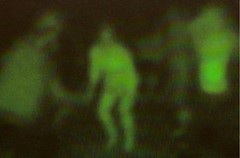 Michelle Rick
Michelle RickIf you don’t live here in the East Village, you all naturally assume that we collectively get up around 10:30 a.m., rearrange our dreadlocks, drink coffee while sitting on a fire escape, admire the worn painted ads on the sides of our buildings, and then begin our long day of dance auditions before our bartending gigs start at 5 p.m.
You imagine that our clothes are beautifully tie-dyed and that our jewelry looks like we sprinkled a Tibetan souvenir shop onto ourselves. You picture us writing poetry on a bed of leaves in Tompkins Square Park, only raising our heads to drink wheatgrass smoothies. You are not wrong about any of this, and we are ALL like this.
However, it has recently come to my attention that real estate in the East Village is incredibly expensive.
Expensive to the point where if a group of roommates were to live in a two-bedroom apartment overlooking Pommes Frites and live the lifestyle described above, said group would need to be about 10 people to afford this kind of East Village abode, and that is not including the upkeep of dreads.
Read more…
 Courtesy of Y GalleryFrom a video installation by Juanli Carrion.
Courtesy of Y GalleryFrom a video installation by Juanli Carrion.The subjects lurch to and fro in a drunken, slow-motion dance across the barroom floor, enveloped in a thick and sultry green fog. Then the action cuts to a solitary young woman who stares silently through this murk into a computer, until you the viewer turn away to find distraction in a barren art gallery as if possessed by a waking nightmare.
Such is what Juanli Carrion’s wall-sized video brings to the eyes in an exhibition entitled “The Plague of Darkness,” at Y Gallery on Orchard Street. The green-tinged night-vision technology so valued for military applications is employed here by Mr. Carrion to evoke its authoritative intrusion on a very personal level.
The work of other Latin American artists was also on display. Some speak to the history of totalitarian regimes in their native countries, and the will of the artists to survive them. Associate director Yoab Vera, himself from Mexico City, guided me through the gallery, and explained that although Y Gallery’s representation was 50 percent Latin American, the true goal was to open a dialogue between cultures, theirs and ours.
Y Gallery is located at 165 Orchard Street, between Rivington and Stanton. The exhibit runs through July 31.





